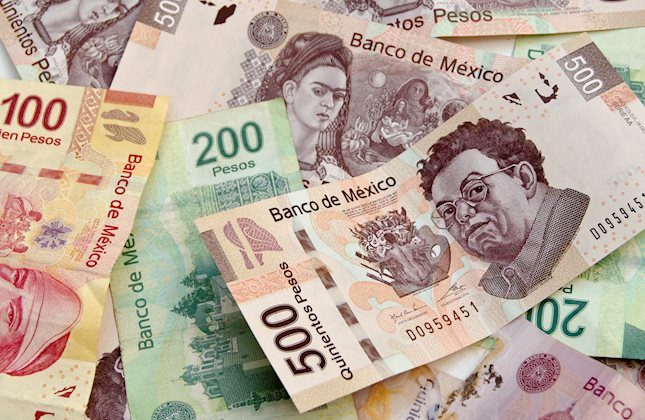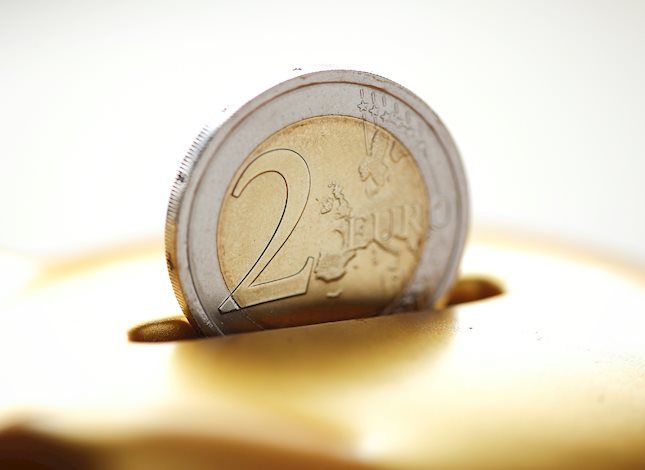Gold price edges lower on the back of persistent inflation concerns
- Gold price edges lower on the back of persistent inflation concerns as data shows stubborn inflation in both Europe and America.
- The precious metal has weakened amid expectations interest rates will remain higher for longer in the US.
- The US Federal Reserve meeting in May could color the outlook for interest rates, impacting Gold price.
The Gold price (XAU/USD) edges lower on Monday, trading in the $2,330s an ounce, on the back of inflation concerns caused by recent data from the US and Europe which showed stubbornly high inflation persisting.
In Europe, HICP data, which is the European Central Bank's (ECB) prefered inflation gauge, showed inflation in both Germany and Spain failed to come down in April. This follows data out of the US last week that indicated inflation remaining high in the first quarter.
The data in turn suggests both the ECB and Federal Reserve (Fed) may need to keep interest rates elevated for longer than previously thought in order to combat inflation. Higher inflation is negative for Gold price as it increases the opportunity cost of holding Gold which is non-yielding.
Gold price comes off highs on interest rate outlook
The Gold price has broadly been trading sideways over the last week after a backslide from record highs of $2,430 in mid-April, when it became apparent interest rates would remain higher for longer in the United States. This made non-yielding Gold less attractive because investors could earn relatively more by staying in cash.
Persistently high inflation in the US caused the recalibration of the outlook for interest rates. From the US Federal Reserve (Fed) – the body tasked with setting interest rates in America – foreseeing the need for three 0.25% interest-rate cuts in 2024, markets now expect only one and a half 0.25% cuts, due to persistently high inflation.
More light will be shed on the outlook for interest rates when the Fed meets to decide its monetary policy on Wednesday, in the meantime Gold price may remain relatively subdued.
Gold price may drift lower in the short-term but will eventually recover – TD Securities
Gold price is likely to drift lower in the short-term if economic data stays firm and inflation persists but this is unlikely to last into the autumn, according to analysts at investment bank TD Securities.
“..once we start seeing disappointment or negative data surprises, investors may start getting interested again into the autumn,” says Bart Melek, Head of Commodity Strategy at TD Securities.
“Once Western demand is combined with China uptake, it is quite likely that the yellow metal will move above recent record levels. Under this scenario, $2,500+ target would be reasonable,” adds Melek.
Technical Analysis: Gold price pulls back in an uptrend
Gold price (XAU/USD) is showing a mixed picture on the 4-hour chart, which technical analysts use to analyze the short-term trend.
Gold 4-hour Chart
On the one hand, the sell-off that began at the April 19 highs could still have lower to go. In such a scenario the move could be unfolding as a three-wave Measured Move pattern with its third and final C wave yet to unfold.
On the other hand, a break above the cluster of Moving Averages and the peak of wave B at $2,353 would potentially usher in a new more bullish environment. This could then see a retest of $2,400.
A break below $2,290, however, would confirm more downside as wave C unfolds, with targets at $2,267 and $2,243.
The Moving Average Convergence Divergence (MACD) momentum indicator is printing green histogram bars but has not yet risen above zero, giving a neutral to marginally positive stance.
Additionally, the trend for Gold price is up both in the medium and long-term, supporting bulls.
Gold FAQs
Gold has played a key role in human’s history as it has been widely used as a store of value and medium of exchange. Currently, apart from its shine and usage for jewelry, the precious metal is widely seen as a safe-haven asset, meaning that it is considered a good investment during turbulent times. Gold is also widely seen as a hedge against inflation and against depreciating currencies as it doesn’t rely on any specific issuer or government.
Central banks are the biggest Gold holders. In their aim to support their currencies in turbulent times, central banks tend to diversify their reserves and buy Gold to improve the perceived strength of the economy and the currency. High Gold reserves can be a source of trust for a country’s solvency. Central banks added 1,136 tonnes of Gold worth around $70 billion to their reserves in 2022, according to data from the World Gold Council. This is the highest yearly purchase since records began. Central banks from emerging economies such as China, India and Turkey are quickly increasing their Gold reserves.
Gold has an inverse correlation with the US Dollar and US Treasuries, which are both major reserve and safe-haven assets. When the Dollar depreciates, Gold tends to rise, enabling investors and central banks to diversify their assets in turbulent times. Gold is also inversely correlated with risk assets. A rally in the stock market tends to weaken Gold price, while sell-offs in riskier markets tend to favor the precious metal.
The price can move due to a wide range of factors. Geopolitical instability or fears of a deep recession can quickly make Gold price escalate due to its safe-haven status. As a yield-less asset, Gold tends to rise with lower interest rates, while higher cost of money usually weighs down on the yellow metal. Still, most moves depend on how the US Dollar (USD) behaves as the asset is priced in dollars (XAU/USD). A strong Dollar tends to keep the price of Gold controlled, whereas a weaker Dollar is likely to push Gold prices up.
Forex News
Keep up with the financial markets, know what's happening and what is affecting the markets with our latest market updates. Analyze market movers, trends and build your trading strategies accordingly.














